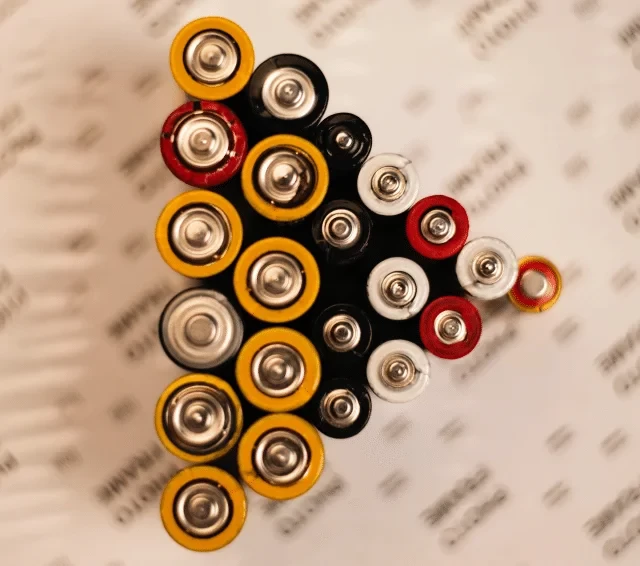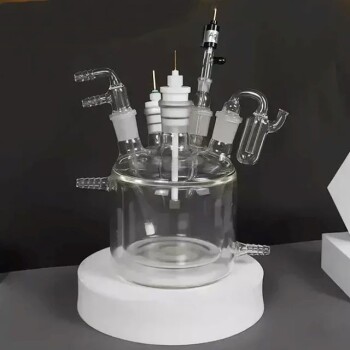Introduction
Electrochemical cells are devices that convert chemical energy into electrical energy through the use of oxidation-reduction reactions. They are widely used in various applications such as energy storage, fuel cells, and batteries. Electrochemical cells are classified into two types: electrolytic cells and galvanic or voltaic cells. Electrolytic cells use electrical energy to drive non-spontaneous chemical reactions, while galvanic cells use spontaneous chemical reactions to produce electrical energy. The use of electrochemical devices for energy storage has many advantages over traditional energy storage methods, including high energy density, low self-discharge rates, and long cycle life. This blog post will explore the benefits of electrochemical cells for energy storage.
Table of Contents
Definition of Electrochemical Cells
Electrochemical cells are devices that convert chemical energy into electrical energy. They are made up of two electrodes (an anode and a cathode) that are separated by an electrolyte. The anode is the electrode where oxidation takes place, and the cathode is the electrode where reduction takes place. The electrolyte is a solution that allows ions to move between the electrodes, completing the circuit and allowing for the flow of charge.

Types of Electrochemical Cells
There are two main types of electrochemical cells: voltaic (or galvanic) cells and electrolytic cells. Voltaic cells generate an electric current from a spontaneous chemical reaction, while electrolytic cells use an external source of electrical energy to drive a non-spontaneous chemical reaction.
Working Principle of Electrochemical Cells
Electrochemical cells work based on the redox reaction. The redox reaction involves the transfer of electrons from one substance to another. In a voltaic cell, the anode undergoes oxidation and loses electrons, while the cathode undergoes reduction and gains electrons. The electrons flow from the anode to the cathode through an external circuit, generating an electrical current. Meanwhile, the ions move from the anode to the cathode through the electrolyte, completing the circuit and maintaining a neutral charge.
Applications of Electrochemical Cells
Electrochemical cells have several practical applications, from small-scale batteries to large-scale power generation systems. They are widely used in energy storage applications, such as batteries and fuel cells. Fuel cells are electrochemical devices that generate electricity from a fuel source, such as hydrogen, and an oxidizing agent, such as oxygen. They are increasingly being used in transportation applications, as they offer a clean and efficient alternative to traditional combustion engines.
Advantages of Electrochemical Cells
Electrochemical cells offer several benefits when it comes to energy storage. Firstly, they are highly efficient, with energy conversion rates of up to 90%. Additionally, electrochemical cells are highly scalable, which means they can be used in a wide range of applications, from small portable devices to large-scale power generation systems. Another benefit of electrochemical cells is their low maintenance requirements, which makes them a cost-effective option for long-term energy storage. Electrochemical cells are also environmentally friendly, as they do not emit harmful pollutants or greenhouse gases during operation. Finally, electrochemical cells are highly reliable and can operate for many years without significant degradation in performance.
Electrochemical cells are an important technology for energy storage and have numerous practical applications. With their high efficiency, scalability, low maintenance requirements, and reliability, electrochemical cells are an attractive option for a wide range of energy storage applications.
Working of Electrolytic Cells
Electrolytic cells are electrochemical cells that use electrical energy to facilitate a non-spontaneous redox reaction. They are commonly used for the electrolysis of certain compounds, such as water and molten sodium chloride. The working of an electrolytic cell involves the following steps:
Step 1: Cathode and Anode
An electrolytic cell consists of a cathode and an anode. The cathode is negatively charged, while the anode is positively charged.
Step 2: Electrolyte Solution
The electrolyte solution provides a medium for the exchange of electrons between the cathode and the anode. Commonly used electrolytes in electrolytic cells include water (containing dissolved ions) and molten sodium chloride.
Step 3: Movement of Ions
When an external electric current flows into the cathode of an electrolytic cell, the resulting negative charge attracts the dissociated positive ions present in the electrolyte. This results in the deposition of positively charged ions onto the cathode. Therefore, the negatively charged ions flow towards the anode, which is positively charged.
Step 4: Chemical Reaction
As negatively charged ions flow towards the anode and positively charged ions deposit onto the cathode, a chemical reaction takes place at the electrodes. This chemical reaction releases energy in the form of electrons. These electrons then flow through an external circuit, providing power to an electrical device.
Step 5: Non-Spontaneous Redox Reaction
The overall effect of the chemical reaction that occurs in an electrolytic cell is the transfer of electrons from the negative ions to the positive ions, resulting in a non-spontaneous redox reaction. The energy required to make this reaction proceed is supplied by the electric current.
Electrolytic cells have a wide range of applications, including the production of oxygen and hydrogen gas from water, the extraction of aluminium from bauxite, and the electrorefining of many non-ferrous metals. They are also used in electroplating, which is the process of forming a thin protective layer of a specific metal on the surface of another metal.
In conclusion, electrolytic cells are an important type of electrochemical cell that converts electrical energy into chemical energy. The working of an electrolytic cell involves the movement of ions, a chemical reaction, and the transfer of electrons resulting in a non-spontaneous redox reaction. With their wide range of applications, electrolytic cells have revolutionized the field of energy storage and are set to play a significant role in our transition to a more sustainable energy future.
Galvanic or Voltaic Cells
Electrochemical cells are devices that convert chemical energy into electrical energy and are used in a variety of applications, including energy storage. Electrochemical cells come in two types: galvanic or voltaic cells, which generate electricity spontaneously through a redox reaction, and electrolytic cells, which require an external power source to drive the reaction in the opposite direction. In this article, we will discuss the benefits of electrochemical cells for energy storage, focusing on galvanic or voltaic cells.

What are Galvanic or Voltaic Cells?
Galvanic or voltaic cells are electrochemical cells that generate electrical energy from spontaneous redox reactions. They are named after Luigi Galvani and Alessandro Volta, who made significant contributions to the development of electrochemistry.
How do Galvanic or Voltaic Cells work?
Galvanic or voltaic cells consist of two half-cells, each containing an electrode and an electrolyte. The two half-cells are connected by a salt bridge or a porous membrane, which allows ions to move between the two half-cells and maintain electrical neutrality.
In a galvanic or voltaic cell, the half-reactions occur spontaneously, and electrons flow from the anode to the cathode through an external circuit, generating an electric current. The anode is the electrode where oxidation occurs, while the cathode is the electrode where reduction occurs.
Key Features of Galvanic or Voltaic Cells
Galvanic or voltaic cells have several key features that make them ideal for energy storage applications:
Spontaneous Reaction
Galvanic or voltaic cells generate electricity spontaneously, without the need for an external power source. This makes them ideal for use in remote or off-grid locations where a reliable power source may not be available.
High Energy Density
Galvanic or voltaic cells have a high energy density, which means they can store a large amount of energy in a small space. This makes them ideal for use in portable devices, such as smartphones and laptops.
Long Cycle Life
Galvanic or voltaic cells have a long cycle life, which means they can be charged and discharged many times without losing their capacity. This makes them ideal for use in electric vehicles and other applications where the battery is frequently charged and discharged.
Low Self-Discharge Rate
Galvanic or voltaic cells have a low self-discharge rate, which means they can retain their charge for a long time when not in use. This makes them ideal for use in emergency backup power systems.
Safe and Environmentally Friendly
Galvanic or voltaic cells are safe and environmentally friendly, as they do not contain toxic or hazardous materials. This makes them ideal for use in applications where safety and environmental concerns are a priority.
Conclusion
Galvanic or voltaic cells offer many benefits for energy storage, including high energy density, long cycle life, low self-discharge rate, safety and environmental friendliness, and cost-effectiveness. As such, they are likely to play an increasingly important role in meeting the energy storage needs of the future.
Salt Bridge
Electrochemical cells have been used for decades as a means of energy storage, playing a crucial role in the development of modern technology. One of the essential components of these cells is the salt bridge, which connects the two half-cells and allows the flow of ions between them. Without the salt bridge, the charge difference between the two half-cells would quickly prevent the further flow of electrons.
Function of Salt Bridge
The salt bridge allows the flow of negative or positive ions to maintain a steady-state charge distribution between the oxidation and reduction vessels while keeping the contents otherwise separate. Other devices for achieving the separation of solutions are porous pots and gelled solutions. A porous pot is used in the Bunsen cell. The solution in the salt bridge must be inert and nonreactive with other solutions. This prevents a reaction between the solution and the salt bridge and allows the movement of ions between the two half-cells.
Importance of Salt Bridge
The salt bridge plays a vital role in the electrochemical cell by maintaining the electrical neutrality of the two half-cells. As electrons flow from one half-cell to the other through an external circuit, a difference in charge is established. If no ionic contact were provided, this charge difference would quickly prevent the further flow of electrons. The salt bridge allows the flow of negative or positive ions to maintain a steady-state charge distribution between the oxidation and reduction vessels, while keeping the contents otherwise separate.
Salt Bridge and Cell Potential
The cell potential depends on the concentration of the reactants, as well as their type. As the cell is discharged, the concentration of the reactants decreases, and the cell potential also decreases. The cell potential can be predicted through the use of electrode potentials (the voltages of each half-cell). These half-cell potentials are defined relative to the assignment of 0 volts to the standard hydrogen electrode (SHE). The difference in voltage between electrode potentials gives a prediction for the potential measured.
Different Types of Salt Bridges
There are different types of salt bridges that can be used in the electrochemical cell. One is the glass tube bridge, which is a tube that has a U-shape and is filled with electrolytes like sodium chloride and potassium nitrate. Another type is the filter paper bridge, which is formed by a porous material such as filter paper that has electrolytes soaked. The solution in the salt bridge must be inert and nonreactive with other solutions. This prevents a reaction between the solution and the salt bridge and allows movement of ions between the two half-cells.
In conclusion, the salt bridge plays an essential role in the electrochemical cell by maintaining the electrical neutrality of the two half-cells. It allows the flow of negative or positive ions to maintain a steady-state charge distribution between the oxidation and reduction vessels, while keeping the contents otherwise separate. There are different types of salt bridges that can be used in the electrochemical cell, such as the glass tube bridge and the filter paper bridge. Understanding the function of the salt bridge is crucial in designing and optimizing the electrochemical cell for various applications.
Electrochemical Devices for Energy Storage

Electrochemical cells are innovative devices that have revolutionized the energy storage industry. These cells convert chemical energy into electrical energy, making them highly efficient and reliable. Here are five benefits of electrochemical cells for energy storage:
-
High Energy Density: Electrochemical cells have a high energy density, which means they can store a large amount of energy in a small space. This makes them ideal for use in portable devices such as smartphones and laptops.
-
Long Life Span: Electrochemical cells have a longer lifespan compared to traditional batteries. This is because they use chemical reactions to generate electricity, which reduces the wear and tear on the cell over time.
-
Environmentally Friendly: Electrochemical cells are environmentally friendly as they do not emit harmful pollutants. They are also recyclable, which reduces the amount of waste in landfills.
-
Fast Charging: Electrochemical cells can be charged quickly, making them ideal for use in electric vehicles. This feature allows for longer driving ranges and reduces the time needed for charging.
-
Cost-Effective: Electrochemical cells are cost-effective as they require less maintenance and have a longer lifespan. They also have a lower cost per unit of energy compared to traditional batteries.
Electrochemical devices for energy storage include redox flow batteries, Li-ion batteries, and electrolytic cells.
Redox Flow Battery
A redox flow battery is a type of electrochemical cell that uses two tanks of liquid electrolytes separated by a membrane. The liquids flow past the membrane and electrodes, where they undergo oxidation and reduction reactions to produce electrical energy. Redox flow batteries have a long cycle life, high efficiency, and can be scaled up for large-scale energy storage.
Li-ion Batteries
Li-ion batteries are rechargeable electrochemical cells that use lithium ions as the solute in the electrolyte. They have a high energy density, long cycle life, and are commonly used in portable electronic devices and electric vehicles. The cathode of a Li-ion battery typically consists of an intercalated lithium compound, while the anode is made of graphite.
Electrolytic Cells
Electrolytic cells are electrochemical devices that use an external source of electrical energy to drive non-spontaneous redox reactions. They are commonly used for the electrolysis of water to produce hydrogen and oxygen gas. Electrolytic cells also have applications in electroplating, the extraction of metals from ores, and the production of high-purity metals.
In conclusion, electrochemical devices for energy storage offer numerous benefits such as high energy density, long cycle life, environmental friendliness, fast charging, and cost-effectiveness. Redox flow batteries, Li-ion batteries, and electrolytic cells are examples of electrochemical devices that have revolutionized the energy storage industry. These devices have a wide range of applications in portable electronic devices, electric vehicles, and large-scale energy storage systems.
Advantages of Electrochemical Devices for Energy Storage
Electrochemical devices have become an important technology for energy storage due to their many benefits. Here are some of the key advantages of electrochemical devices for energy storage:
High Efficiency
Electrochemical cells are highly efficient energy storage devices, with conversion rates ranging from 70-90%. This means that a large percentage of the energy put into the cells is converted into electrical energy, making them an attractive option for industries looking to reduce their energy costs.
Environmentally Friendly
Electrochemical cells are environmentally friendly energy storage devices as they do not produce harmful emissions or waste products. This makes them an attractive option for industries looking to reduce their carbon footprint and comply with environmental regulations.
Reliable and Durable
Electrochemical cells are reliable and durable energy storage devices, with a long lifespan and low maintenance requirements. This means that they can be used in a variety of applications, including transportation, telecommunications, and renewable energy.
Versatile Energy Storage
Electrochemical cells are versatile energy storage devices, with the ability to store energy in a variety of forms, including chemical, electrical, and thermal. This makes them an attractive option for a wide range of industries and applications.
Cost-Effective Energy Storage
Electrochemical cells are cost-effective energy storage devices, with a low cost per unit of energy stored. This means that they can be used to reduce energy costs and improve the bottom line for businesses.
In conclusion, electrochemical devices offer many advantages as an energy storage technology. They are highly efficient, environmentally friendly, reliable and durable, versatile, and cost-effective. With ongoing research and development, these devices are likely to become even more attractive to industries looking to reduce their energy costs and improve their environmental impact.
Conclusion
In conclusion, electrochemical cells have become a crucial aspect of energy storage technology. They offer various benefits, such as high energy density, low self-discharge rates, and longer lifespan compared to traditional battery technologies. The diversity of electrochemical cells and their ability to convert chemical energy into electrical energy makes them essential for many applications, including electric vehicles, portable electronic devices, and renewable energy storage. With the continued advancements in technology, electrochemical cells will continue to play a significant role in meeting the world's growing energy demands while reducing carbon emissions.
Related Products
- Electrolytic Electrochemical Cell for Coating Evaluation
- Thin-Layer Spectral Electrolysis Electrochemical Cell
- H Type Electrolytic Cell Triple Electrochemical Cell
- Multifunctional Electrolytic Electrochemical Cell Water Bath Single Layer Double Layer
- Side Window Optical Electrolytic Electrochemical Cell
Related Articles
- Handheld Coating Thickness Gauges: Accurate Measurement for Electroplating and Industrial Coatings
- Understanding Electrodeposition with Electrochemical Electrodes
- Understanding Flat Corrosion Electrolytic Cells: Applications, Mechanisms, and Prevention Techniques
- Understanding Saturated Calomel Reference Electrodes: Composition, Uses, and Considerations
- Applications of Electrolytic Cells in Purification and Electroplating

















